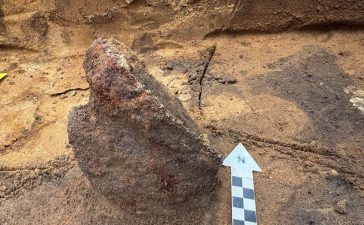In a major space breakthrough, astronomers have discovered a structure that may be the largest known in the universe: Quipu.
Named after the Incan system of knotted cords used for recording information, Quipu spans an astonishing 1.3 billion light-years—a distance over 13,000 times the length of the Milky Way.
It contains a shocking 200 quadrillion solar masses.
Quipu consists of a long central filament, with multiple smaller filaments branching off from it.
This pattern resembles the traditional quipu cords, where a main string has many smaller strings attached. In cosmic terms, these filaments are made up of galaxies, gas, and dark matter, forming part of the cosmic web—the large-scale structure of the universe.
In cosmic terms, these filaments are made up of galaxies, gas, and dark matter, forming part of the cosmic web—the large-scale structure of the universe.
Structures like Quipu provide insight into how matter is distributed in the universe and how galaxies evolve within cosmic filaments.
It contributes to our understanding of dark matter, cosmic expansion, and the formation of the cosmic web. Studying such formations helps astronomers refine models of large-scale structure formation in the universe.
The research, titled “Unveiling the largest structures in the nearby universe: Discovery of the Quipu superstructure,” has been accepted for publication in the journal Astronomy and Astrophysics. Hans Bohringer from the Max Planck Institute is the lead author. It is available on the arXiv preprint server.
The authors stated: “For a precise determination of cosmological parameters, we need to understand the effects of the local large-scale structure of the universe on the measurements.
“They include modifications of the cosmic microwave background, distortions of sky images by large-scale gravitational lensing, and the influence of large-scale streaming motions on measurements of the Hubble constant.”
In their work, Bohringer and his co-researchers found Quipu and four other superstructures within a distance range of 130 to 250 Mpc. They used X-ray galaxy clusters to identify and analyze the superstructures in their Cosmic Large-Scale Structure in X-rays (CLASSIX) Cluster Survey. X-ray galaxy clusters can contain thousands of galaxies and lots of very hot intracluster gas that emits X-rays.
These emissions play a crucial role in mapping the mass of superstructures. X-rays reveal the densest regions where matter is most concentrated, helping to outline the underlying cosmic web. Acting as signposts, these emissions guide astronomers in identifying and studying massive cosmic formations.












